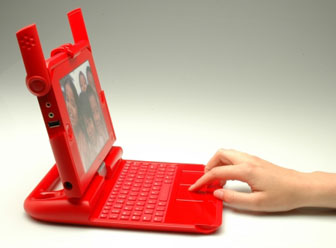Microsoft wants in on $100 laptop for poor children
Microsoft wants in on $100 laptop for poor children
mongabay.com
December 6, 2006
Looks like Microsoft may want to be involved in the One Laptop Per Child project (OLPC) after all.
Reports indicate that Microsoft wants to make its Windows CE operating system, one usually installed on handheld devices, available on the OLPC notebook computer, a $100 laptop designed for use by children in developing countries.
At the NetEvents conference in Hong Kong on Saturday, OLPC founder Nicholas Negroponte of the Massachusetts Institute of Technology (MIT) said that the laptops include a SD slot for the specific purpose of enabling Microsoft to install Windows on the machines. Negroponte also revealed that some OLPC machines at currently at Microsoft undergoing testing according to a report from VNUnet.
Microsoft’s apparent involvement in the project comes as a bit of a surprise following Bill Gates’ derisive comments on the machine back in March when he called the machines underpowered and impractical.

The $100 laptop. Photo courtesy of One Laptop per Child. |
“The last thing you want to do for a shared use computer is have it be something without a disk … and with a tiny little screen,” said Gates, according to a report from Reuters. “If you are going to go have people share the computer, get a broadband connection and have somebody there who can help support the user, geez, get a decent computer where you can actually read the text and you’re not sitting there cranking the thing while you’re trying to type.”
Still Negroponte is said to be a close friend of Gates, and the two regularly discuss the project, which aims to deliver millions of laptops to the world’s poorest children.
Early versions of the laptop, the first generation of which offers 128MB of memory (RAM) and 512MB of storage, began shipping last month. Already the governments of Brazil, Argentina, Libya, Nigeria, Thailand, and Israel have expressed interest in the machines which have received support from Google, AMD, Brightstar, News Corporation, and Red Hat. Negroponte told Silicon.com at the ITU Telecom World conference in Hong Kong that some wealthy countries, including Finland, United Arab Emirates, and France, have stepped forward with offers to buy the computers for developing countries including Namibia, Pakistan, and French-speaking African countries, respectively. The minimum order is a million machines, according to Negroponte, and the laptops will be distributed through education ministries using established textbook channels at no-cost to recipients themselves.
The laptop, which was tested by the U.S. State Department in mid-November, is WiFi- and cell phone-enabled, and can be powered using a hand-crank. It is designed to be used in harsh environments such as remote rural areas in developing countries. The weather-proof laptops will available in some 30 colors.

|
The U.N. has voiced approval for the project.
“When they start reaching the hands of the world’s children, these robust and versatile machines will enable kids to become more active in their own learning,” said Kofi Annan, Secretary-General of the U.N., in comments made at the World Summit on the Information Society last year. “Children will be able to learn by doing, not just through instruction or rote memorization. And they will be able to open a new front in their education: peer-to-peer learning.”
Related article
Cell phones may help “save” Africa For all the talk about “making poverty history” through aid and debt relief at the G8 meeting in Scotland and among aging rock stars at Live8 concerts, perhaps the best tool for poverty alleviation on the continent is the mobile phone. Yes, that ubiquitous handheld device has done wonders for the poor around the world.
This article uses information from the U.N., Reuters, VNUnet, Silicon.com, OLPC, and previous mongabay.com articles.














